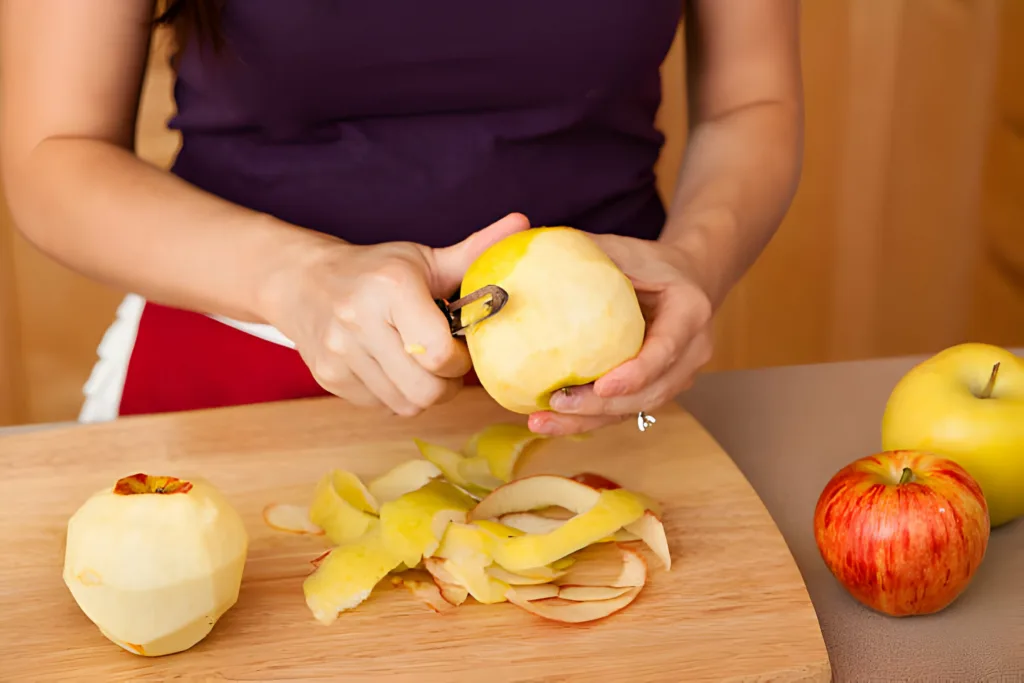For years, we’ve been conditioned to peel away the outer layers of fruits and vegetables, discarding them as inedible or even unappetizing. But little do we know, these seemingly insignificant skins and peels are often bursting with vital nutrients, vitamins, and antioxidants that we’re unknowingly tossing aside. It’s time to rethink our peeling habits and embrace the hidden treasures lurking just beneath the surface.
Peel Powerhouses:
Apples: Don’t let the proverb fool you – an apple with skin on provides up to 332% more vitamin K, 142% more vitamin A, 115% more vitamin C, and 20% more calcium than its peeled counterpart. So, sink your teeth into the whole apple for a nutritional bonanza.
Potatoes: The humble spud hides a wealth of nutrients in its skin, including potassium, niacin, and iron. In fact, a boiled potato with skin offers 175% more vitamin C, 115% more potassium, and 111% more folate than a peeled one. Bake ’em, mash ’em, or roast ’em, but leave the skin on for maximum nutritional benefit.
Citrus Fruits: Oranges, grapefruits, and lemons boast vibrant, vitamin C-rich peels that are often relegated to zest or marmalade. But these colorful rinds pack a powerful punch – orange peels contain twice the vitamin C found in the juicy flesh! Grate them into smoothies, baked goods, or even savory dishes for a zesty, nutrient boost.
Watermelon: The refreshing summer fruit hides a secret – its rind is surprisingly nutritious, harboring vitamins C, A, and B6, along with the amino acid citrulline, which converts to arginine, essential for blood flow and heart health. Pickle the rind, blend it into smoothies, or even roast it for a sweet and savory treat.
Carrots: The vibrant orange flesh of carrots isn’t the only source of beta-carotene. The green tops are packed with vitamins and minerals, while the outer skin boasts additional fiber and antioxidants. Don’t peel away the goodness – scrub them clean and enjoy them raw, roasted, or in stir-fries.

Unlocking the Peel Potential: Before embracing the peel revolution, remember to:
Wash thoroughly: Use a vegetable brush or produce wash to remove any dirt, pesticides, or wax coatings.
Go organic: Opt for organic produce whenever possible to minimize exposure to harmful chemicals.
Get creative: Explore innovative ways to incorporate peels into your diet. Blend them into soups, smoothies, or pesto, pickle them, or use them as garnish.
By embracing the power of peels, you’re not just reducing food waste and saving money, you’re unlocking a treasure trove of hidden nutrients for a healthier, happier you.
So, the next time you reach for a fruit or vegetable, think twice before you peel – you might just be tossing away a goldmine of good health!
Bonus Tip: Not all peels are created equal. Certain fruits and vegetables, like bananas and mangoes, have peels that are not recommended for consumption due to their tough texture or presence of potentially harmful compounds. Do your research and choose wisely!
Remember, small changes in your dietary habits can make a big difference in your overall health and well-being. So, ditch the peeler, embrace the peel, and nourish your body from the inside out!




